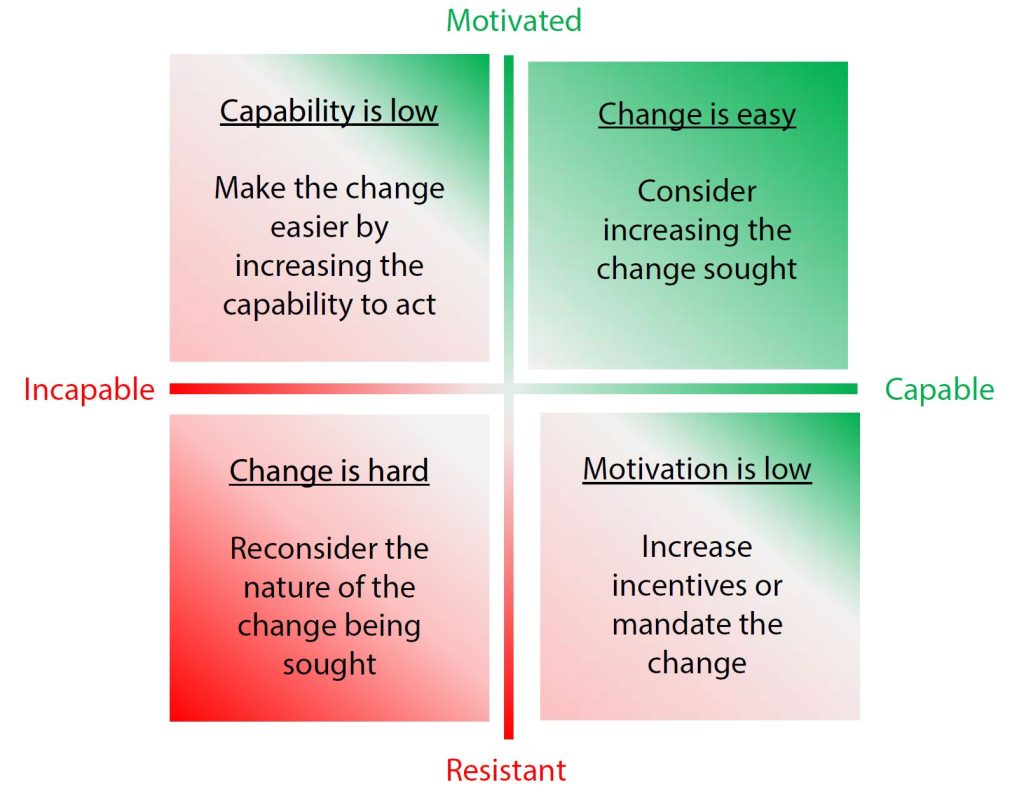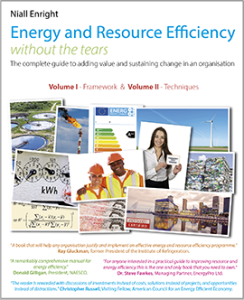For change to happen, people and teams need two things: the capability to carry out the required action and the desire to do so. Capability reflects many aspects such as knowledge and skills, as well as resources like time and money. Motivation can be intrinsic due to beliefs and attitudes or extrinsic due to instructions, incentives, penalties or social norms.

Capability and motivation are related. An easy-to-implement behaviour change (i.e. one for where the existing capability to act is high) will need much less motivation than a challenging behaviour change (i.e. one which requires lots of resources, time, effort, risk-taking, knowledge, etc).
Understanding the interrelationship between capability and motivation can dramatically increase the chance of success of our change programme.
A useful first step of our behaviour change process is to define the precise action we want people to perform and assess the level of motivation and capability needed to carry out that action. Having understood the requirements, we can then determine the actual levels of motivation and capability within the target group and develop strategies to bridge any gaps.
Much of the literature on behaviour change focuses on changing the intrinsic motives of individuals by, for example, engaging them on an emotional level on the implications of climate change. While this is certainly desirable, as strong beliefs can lead to more sustainable behaviours in the long run, it is also more difficult achieve.
When working on motivation, extrinsic factors such as incentives, penalties or social pressure can be easier to put in place but have a drawback in that the behaviour change can be harder to maintain once the external stimulus is removed. Intrinsic motivation is much more powerful, but takes much more effort to develop.
When embarking on a sustainability behaviour change process, I tend to start my planning by focusing on reducing the capability and opportunity barriers to change rather than on motivation. For example, I consider how to make the change easy and convenient to implement, what tools and training are needed, and how to ensure that the necessary time and money are available. Once this aspect is maximized, I then consider what messages and motivation are needed to prompt people to act. By ensuring a high capability to act I also reduce the negative emotions and frustration that can arise if motivated people subsequently encounter barriers to action.
This post is an extract from my book “Energy and Resource Efficiency without the tears – the complete guide to adding value and sustaining change in an organisation” . I have made this available free of charge to fellow practitioners.



0 Comments